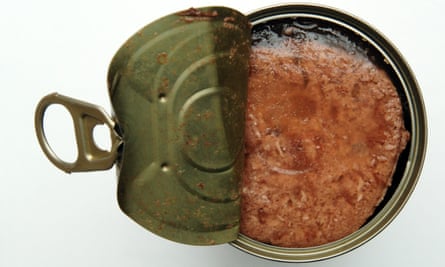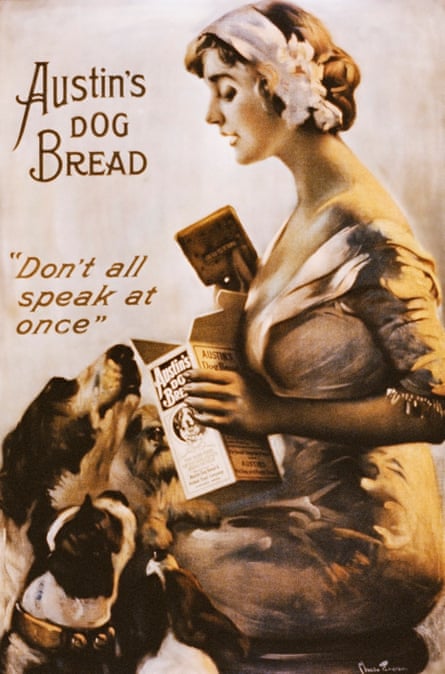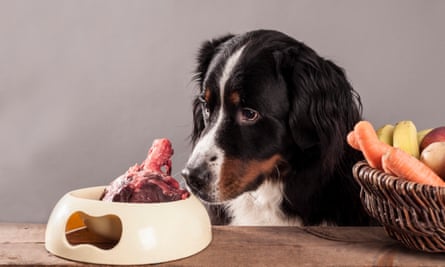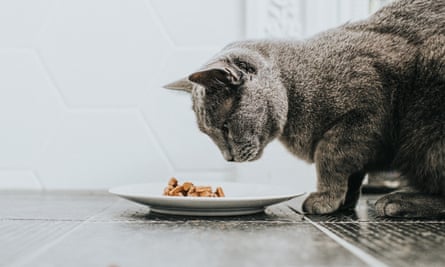THE LONG READ
200 cats, 200 dogs, one lab: the secrets of the pet food industry
Pet food is a £120bn industry, with vast resources spent on working out how best to nourish and delight our beloved charges. But how do we know if we’re getting it right?
Florence Meowmalade came to me on a chilly winter’s night last year. A one-year-old orange tabby with a little pink nose, she arrived at my door in London after travelling for three days in a van with 30 dogs across continental Europe. She brought with her an EU pet passport, a soiled pink blanket and a penchant for snuggling into any available lap.
Growing up, I had a dog (a husky), a goldfish that jumped out of its bowl and a clutch of gerbils that refused to stop procreating – but those had all been family pets. The arrival of Florence, or Lady Meowmalade as she shall be addressed by her lessers, marked the first time in my life that I had a small creature entirely dependent upon me for her wellbeing. And like so many pet owners before me, her wellbeing became my fixation.
During her time on the streets of Vaslui in Romania, Florence’s teeth had come loose. By the time she reached me, she had none. Her foster mother, who cared for Florence in Romania until she left for London, assured me that she still had a healthy appetite and could sustain herself on kibble – dry, compound food – albeit the kind made for kittens. And she seemed to like it. She came to us at least a kilo overweight, her pouch swaying whenever she trotted into the room.
But I couldn’t stop worrying about her little pink gums, which she flashed at us every time she chirped or squeaked for our attention. If I had no teeth, I wondered, would I enjoy gumming down hard baked pellets for every meal? Or would I prefer some of that soft wet mix that, in pet food commercials, you see getting spooned so alluringly on to pristine white plates?
Most pets once got by on little more than table scraps, and whatever extra they could hunt or scavenge. Today, things are different. The love humans have for their pets, combined with capitalism’s eagerness to exploit our every desire and anxiety, means pets can now eat better than their owners do. As a pet owner, the sheer level of consumer choice can be overwhelming. Terms like “complete” and “nutritionally balanced” shout out at you from brightly coloured packaging in the pet food aisle of the supermarket. In adverts, hearty looking dogs sprint in slow motion toward kibble cascading into bowls. On social media, targeted posts barrage me with warnings about meat meal and ash content while pushing the latest curated pet food delivery service. Our pets are more than just animals to us – and the $150bn (£120bn) global pet food industry has risen up to cash in on that.
One of the world centres for pet food innovation is located on the site of an old horse farm, deep in the rolling green fields of the British Midlands. The Waltham Petcare Science Institute in Melton Mowbray is the science arm of Mars Petcare, a leading company in the pet food industry. The research that takes place there determines the future products of dozens of pet food brands: Iams, Cesar, Whiskas, Sheba, James Wellbeloved, Pedigree, Eukanuba and more.
About a third of the staff at Waltham work in its research labs. The other two-thirds are dedicated to feeding, training, exercising and maintaining the living spaces of the real stars of the show: the 200 dogs and 200 cats that live at Waltham and test the products developed there. The 200 dogs belong to four different breeds, chosen to represent different canine sizes: labradors for big dogs, beagles for medium, and norfolk terriers and petit basset griffon vendéens for small dogs. Almost all the cats on site are domestic shorthairs, but the odd longhair can also be found.
When I arrived at Waltham one overcast day last summer, I found cats lounging in their outdoor catios, gazing out over swaths of manicured lawn, or shimmying up scratch trees. Labradors of every hue chased balls in play areas and walked on leads with their handlers. The animals live in state-of-the-art facilities. The dogs have heated squares for sleeping and bunk two to a room to prevent loneliness; the cats have specially designed climbing nests that look like spiral staircases. All the animals can access the outdoors from their living quarters.
The dogs are well-trained in the arts of sitting still, lying flat and “chin to hand” – placing their snouts on to the waiting hand of the person in front of them – all of which aid the various check-ups and observations they undergo. Some of these observations require the dogs to be absolutely still, which is no small feat. “Have you ever tried to get a labrador to stop wagging its tail?” Lesley Deacon, Waltham’s behaviour and training lead, asked drily.

Amid all the training, playing, tongue-lolling and tail-wagging, these cats and dogs are hard at work. Each day, they eat two meals, and from there, teams of behaviourists, statisticians and nutritionists study how they respond to the food. Each bowl is protected with a cat flap activated by a specific animal’s microchip, so each dog or cat can freely access its own food, but can not eat food meant for another animal. The bowls are equipped with electronic balances so researchers can track things like how fast the animals ate their food, or if they paused during eating. Like professional athletes, these dogs and cats wear monitors that track their vitals. All of them have had their DNA sequenced, and their quarters are under video surveillance, with staff closely monitoring them for any variations in behaviour or appetite.
All the animals are slated for adoption once they begin to show signs that they’re done with product testing. Most pets end up going home with the staff and scientists who have grown attached to them. To prepare them for the outside world, the dogs play fetch and go on walks at on-site parks designed with a series of different textures – wood chips, brick, pebbles – so they won’t get spooked when they encounter them off campus. When Scott McGrane, one of the research managers at Waltham, took home a cat named Joey 10 years ago, he found that Joey “was a bit perplexed” by the television. The cats’ socialisation rooms now contain TVs – and on the day I visited Waltham, the cats were watching Wimbledon.
This all may seem a bit much for animals known to eat their own faeces. But there are good business reasons for this astonishing attention to detail. The bowl of kibble or wet mix placed in front of pets each day is the end result of months, if not years, of research and experimentation into pet nutrition, food chemistry and veterinary science. And it is this process that companies believe will give them the edge in the increasingly lucrative world of pet food.
When Waltham opened its first nutritional facility in the UK in 1960, the commercial pet food industry was about 100 years old. Before the mid-19th century, household pets survived mostly on table scraps, while working animals received heartier fare. (For the fluffy white toy dogs who acted as status symbols for the rich, the 16th-century French court employed a “boulanger des petits chiens blancs” – a baker whose job was specifically baking bread for these pooches.)
Then came James Spratt. An American electrician and lightning-rod salesman in England, he was horrified to see malnourished dogs at the docks surviving on the sailors’ leftover hardtack – the dense, tasteless biscuits taken on long sea voyages specifically for their durability. In the early 1860s, he launched the patented Spratt’s Meat Fibrine Dog Cakes – a mixture of wheat meal, vegetables, beetroot and beef blood – thus inventing the commercial pet food industry. From the beginning, Spratt advertised his meat fibrin cakes as the food of show dogs – animals with sleek coats, in peak health and form. The association was already there: your dog will be the best because of what it eats.

Following Spratt’s success, others began their own ventures into pet food, which they marketed to the growing middle class. In 1922, Ken-L Ration introduced canned dog food in the US, largely made of horse meat. Canned pet food became the norm until the rationing of tin during the second world war forced the industry to look for alternatives. The result was dry pet food, which had a longer shelf life and could be left out in bowls overnight. In 1956, Purina reformulated its core brand Dog Chow as a dry kibble, the first of its kind. Kibble has dominated the industry ever since.
Waltham opened at a time when veterinarians in the UK were seeing a lot of dogs and cats with vitamin D deficiencies and rickets. The centre has always focused on nutrition, and it was at Waltham that scientists made a number of discoveries that have shaped the composition of pet food throughout the world. It’s possible you’ve spotted chicory root or chicory extract on the ingredient list of some pet food or another. That came about after Waltham researchers demonstrated, in 1997, the prebiotic digestion benefits of the nutrient-dense fibre. All cat food now includes taurine, an amino acid critical for heart function, vision and digestion that cats cannot produce naturally – and it was at Waltham, in the 1980s, that researchers determined the levels required in dry and wet food.
This research extends beyond mere nutrition. In the 1990s, Mars scientists developed the first nutritional supplement to make dog farts less odorous. And today, a major part of the research at Waltham is about how to make healthy food actually taste good to pets. “If they won’t eat it, they won’t get the nutrients they need,” Darren Logan, vice-president of research at the Mars Advanced Research Institute and Global Food Safety Centre, told me. He equated the process to adding soy sauce to plain noodles – the soy sauce doesn’t add much nutritional value, but it entices you to finish your meal.
In 2005, Waltham scientists, in conjunction with the Monell Chemical Senses Centre in Philadelphia, discovered that cats do not have taste receptors for sugar. They tend to go for umami and kokumi – a taste of fullness and richness that flavour scientists purport to be the sixth taste after sweet, salty, sour, bitter and umami. “Cats, as it turns out, have a very similar palate to what Asian cuisine is based around,” said Logan. (While Mars can’t go into detail about how that information translates into the products you see on supermarket shelves, the flavour profiles that the team at Waltham came up with have recently found their way into the worldwide Whiskas brand.)
The enthusiasm of the Waltham cats and dogs as they eat a given product provides crucial data, but taste research goes far beyond this. Taste receptors are encoded in DNA, which means that scientists can use a particular animal’s DNA sequence to see which flavours it will respond to. As with humans, dogs and cats’ palates vary. Building individual taste profiles offer answers when some pets don’t respond well to certain foods: if only one or two cats out of a panel of 40 seem to dislike what they’re tasting, researchers can look at their taste profiles and determine which specific flavour in the product is causing the cat’s aversion. The goal isn’t to develop a food that will please every cat, but one that will appeal to most.

For pets as well as for humans, there are elements other than taste that contribute to the enjoyment of a meal: texture, consistency, appearance, temperature and aroma. Laboratory scientist Freya Grondinger’s main role at Waltham is to smell. The majority of her sniffing is done in front of a gas chromatograph that isolates the individual scents coming from the pet food in order to build an aroma profile. The day I visited, she handed me a small container and asked me to describe the smell. “I would describe it … as dog food,” I said tentatively – it smelled of dry kibble. She laughed. “Potato,” she said. “Starch.”
Grondinger’s job is to note which smell is the strongest in each pet food recipe. She can’t say for sure how a cat or dog will perceive any given smell, but researchers believe that the relative strength of each part of the aroma is similar between people and pets. The notes that smell strongest to Grodinger are typically the ones that are further researched for their appeal to cats and dogs.
The research done in the labs at Waltham then goes to the recipe formulators at the innovation centres, who produce a new “flavour formulation”. This formulation then goes back to Waltham for testing on the dogs and cats. If the pets respond positively, the company’s corporate teams assess the feasibility of producing that formulation on a large scale, and figure out which of Mars’ numerous brands should produce it. These brands are located throughout the world, and different regions have different preferences. “Some countries like dry food, some like wet food. And Japanese markets are very different from North American and South American markets,” Logan said. The formulations also have to change according to what is and isn’t available at any given moment. “We work in a world that has lots of supply challenges,” Logan said. “You have to make sure that you can make adjustments based upon the local sourcing of your ingredients.”
All this means that it can take years for a recipe to go from passing testing at Waltham to being stocked on supermarket shelves.
Protein is at the heart of the pet food industry. Cats are obligate carnivores, meaning that they must have meat, and though dogs have evolved into omnivore scavengers, they also require protein-rich diets. But for the products that dominate the industry, no animal is actually slaughtered solely for pet food. “We’ve always been, as an industry, a kind of reuse and recycling mechanism to deal with excess in the human food chain,” said Michael Bellingham, the chief executive of the industry association UK Pet Food. “If you look at an animal that you’re going to eat, you’re not going to use all of it … our industry uses those materials in a constructive way.” Cooked and processed organ meat and bones, all of which still retains nutritional value for the pet, are the main components of pet food and appear on ingredient lists as “animal by-products”.
But there are those who say our pets deserve better than our leftovers. These are the raw food evangelists: owners and pet companies who argue that we should go back to feeding dogs and cats what they ate in the wild – chiefly a mix of raw meat and bone. Raw food fans denounce kibble as junk food and equate it to eating McDonald’s every day. “Imagine getting optimal nutrition from one bag of food your entire life,” wrote Dr Karen Shaw Becker and Rodney Habib in their book, The Forever Dog: Surprising New Science to Help Your Canine Companion Live Younger, Healthier & Longer. “Sound impossible? It is.” This perspective is becoming increasingly popular. In the UK, the raw pet food sector has grown by about 20% in the past year, and is now worth about £200m, around 5% of the UK sector as a whole.

The concept began gaining popularity in the 1990s when an Australian veterinarian, Ian Billinghurst, introduced it as the Barf diet – “biologically appropriate raw food” or “bones and raw food”. Proponents of raw feeding tend to be critical of the modern pet food industry, and the power of its major companies. In addition to producing food, companies such as Mars fund a number of veterinary schools and clinics, which, raw food advocates claim, push the companies’ products on trainee vets and pet owners, regardless of pet health. (“When any of our veterinary professionals provide nutrition advice, they have the freedom to recommend the best product for that pet, regardless of brand,” said a spokesperson for Linnaeus, a veterinary group that’s part of Mars Veterinary Health.)
Many owners claim that switching their pets to raw food has given them more energy, made their coats shinier and resulted in healthy, non-messy bowel movements. But scientists at places like Nestlé Purina maintain that “there is no scientific evidence that [raw meat diets] provide any specific health benefits”. Instead, these companies have warned against the dangers of raw feeding and possibly exposing your pet to salmonella or E coli. In turn, raw-feeding companies and owners point at the number of recalls of processed pet foods in recent years.
Jonathan Self, who has been feeding his various dogs raw food for 17 years, launched Honey’s Real Dog Food in 2009. A former livestock farmer who went vegetarian after struggling to slaughter his pigs, he understands that though he may not need meat to survive, his dogs do. I made a trip out to Honey’s a few months after my Waltham visit. Situated on the site of an old fish processing plant in the countryside west of London, the company has no team of highly studied cats and dogs – just whichever of the staff’s dogs decided to accompany their owners into work that day.
Before the pandemic and remote work, six or seven dogs could be found trotting about Honey’s offices above the processing room on an average day. When I visited, however, it was just Blue, a one-year-old border collie belonging to the general manager. In the processing room, heaps of raw lamb ribs sat in vats, tinging the refrigerator-chilled air with the rich, metallic scent of blood. The processing typically takes about five hours; lamb takes longer than that because the bones are harder. Three staff members were overseeing the processing of almost three tonnes of food. The meat went into the mincer, bone and all, along with carrots, parsnips and a leafy green. From there, the meat, bone and vegetable blend went into the mixer, then into the casing machine that shaped the mixture into a sausage-like package. The package is frozen before being shipped to customers.

Honey’s pork comes from the “organic pig farmer down the road”, and its goat meat from “the gourmet goat farm in Norfolk”, Self said. The average Honey’s customer spends £70-£80 a month on pet food – in comparison with the £43 a month spent by the average British household. Honey’s is by no means the priciest raw food option: if your pet is large and you choose one of the more expensive brands, you could find yourself spending in excess of £300 a month. That sum doesn’t include the treats and supplements that some owners add to their pets’ raw food bowls: on social media, you can see pet food influencers garnishing their offerings with quail eggs, freeze-dried organ meat, green-lipped mussels and smelt.
Self admits that Honey’s clientele includes a royal and some well-known actors, but the company also serves pensioners and manual workers who don’t have high incomes. “They’re often feeding their dogs better than they’re feeding themselves, in my opinion,” Self said.
Soon after her arrival, I brought Florence Meowmalade to a vet, who voiced some concerns about the impact kibble would have on her gums. A different vet told us not to worry: if she enjoyed kibble, we should continue giving it to her. But by then I had become the sort of neurotic owner who regularly Googled phrases like “is my cat depressed” or “cat ears cold is cat sick”. It didn’t help that whenever I told raw-feeding advocates that I fed my cat kibble, they would respond with some variation of “oh you mustn’t blame yourself”. I began searching for an affordable wet food Florence would like.
I started Florence on Whiskas, which she seemed to like well enough – she finished her morning and evening bowls that first day. The next day, she took about two bites and walked away. “I think she doesn’t like the fish flavour,” I told my husband. I gave her only the chicken flavour; she started sticking her paw into the bowl and flicking bits of it on to the floor. “Maybe it’s the brand,” I said, and changed her over to a more expensive mix, which she left in the bowl until it hardened and congealed.
I had discussed with Self whether I could try Florence on Honey’s, but we realised that without teeth, she wouldn’t be able to get through the bits of bone. I remembered the pet influencers whose reels I had watched on Instagram, but I was unable to afford the delicacies they served up. I settled on a small pouch of powdered bone broth and soaked Florence’s kibble in it. But it was no good: the broth-soaked kibble sat there uneaten, attracting flies.
It was hard for me to not project my own experiences on to my cat. I try not to eat overly processed food, nor do I enjoy eating the same thing every day. Why would she? Yet here was my weird little toothless cat who just seems to love kibble.
Frustrated, I recalled the meal I made Florence on the day she arrived: boiled chicken breast, hand-torn into tiny, digestible pieces. She had licked the bowl clean. With that meal, I had been telling her I could take care of her. I could make her happy. Remembering that chicken, and the satisfaction I felt watching Florence eat it, I began to understand my mother’s compulsion to serve me plate after plate of hand-wrapped dumplings even when I’m close to bursting.
A person can let you know directly what food they like, and why; not so a cat. Florence cannot tell me that she prefers to graze rather than eat big meals – something I only realised somewhere between the second and third wet food brands we tried. Nor can she tell me that she actually enjoys the feel of the kibble on her gums – a theory I’ve been running with for the past few months. So we’ve gone back to kibble, though in the morning I give her a bowl of hand-shredded boiled chicken as well. She’d be happy with just kibble – I know this now. Even so, every morning I carefully shred another chicken breast – just in case.




No comments:
Post a Comment